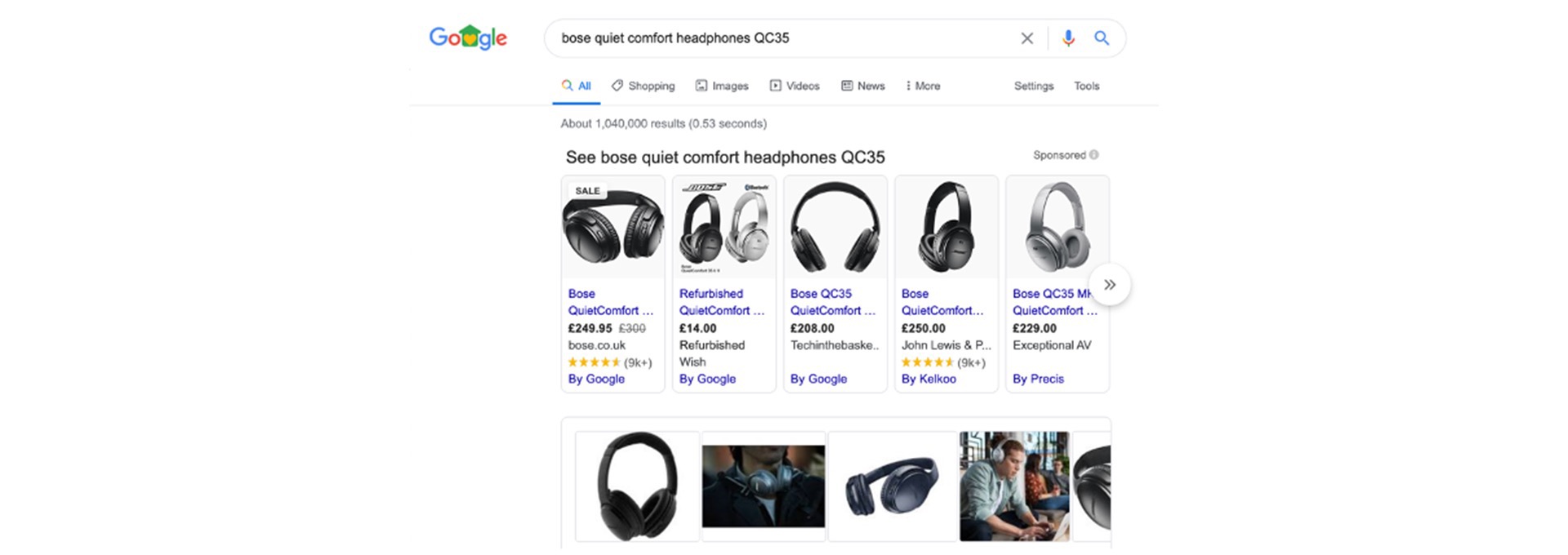We recently produced an article on google shopping ads and how you could get ready for the new changes Google are making. Now the changes are in force, we wanted to take a deeper look at the changes themselves and how they might affect you.

Most internet users, whether they are aware of it or not, will have interacted with shopping ads in one way or another. Shopping ads are the search listings that appear when you do a google search - usually at the very top or on the side of the main list of search results.
The square box filled with product images, reviews and prices is an example of how shopping ads may appear on your search. Shopping ads give the user a quick and easy way of comparing different products within a broad search range, like the example above, but also can be used to narrow down on one product and compare prices across a range of retailers to find the best deal, such as the example below.

What’s New?
You might be thinking “I’ve seen these before, what’s the big deal, there doesn’t seem to be anything new here?” On first observation, you’re right, they do look the same as they always have. However, there’s been a big change behind the scenes. You may or may not have been aware that historically these shopping ads have all been paid for. They haven’t been featured there necessarily because they’re the best fit products for your search terms, but more because they’re the products from companies that have paid to market themselves to you.
Previously therefore, smaller companies who may have had some great products that were a perfect match for your search, might have been ‘priced out’ by bigger corporations with higher budgets. Google now want to make these shopping ads free to allow users to see a wider range of products from a more varied selection of retailers.
What Caused This Change?
This all started with Google’s release of their ‘popular products’ feature on their search results. This function relates mainly to clothing, and allows the user to see items whilst still on the search results pages, as well as filter items by size, colour, gender and fit to suit specific needs.
This is especially useful if you are looking for something that isn’t typical. For example, when searching for male cosmetic products, as cosmetic products are more typically a female product you are likely to get lots of products aimed at females, when in reality you wanted products designed for a male’s skin. Another example might be if you were a woman looking for football boots and when you search you only get a list of men’s football boots or if the ones displayed were all blue and you wanted red ones, you could filter for that, too. Google’s popular products feature provides a way around these issues without having to submit a new search or go into the website and find them yourself.
Most Recent Changes
The popularity of the feature has encouraged Google to look at more ways of making shopping ads more accessible to everyone, including sellers. Google purchased Pointy, a company producing hardware for capturing product and inventory data. Google now use this to take stock of a store’s inventory and then present the data on their search pages. Google then went a step further and have begun encouraging retailers to use product schema markup on their websites. Product schema markup makes it easier for search engines to understand what each item on a website is and how it differs from others, which can be valuable for an ecommerce business. If you haven’t got schema markup set up on your website, get your in-house SEO expert to have a look, or get in touch with a local agency if you need assistance.
Finally, Google changed its restrictions on its Merchant Centre platform. This is where you can upload your website’s inventories and edit how you want them presented in search results. Previously, this platform was restricted only to paying users, however now the area is freely accessible to anyone in the USA, with worldwide coverage expected before the end of the year, meaning a much fairer and better result for both the consumer and the online retailer.
Why Google Made These Changes Now
As previously mentioned, the main aim of all these changes from Google’s perspective is to improve the validity and usefulness of their search results. The reason this is such a focus right now is that Google is under more pressure than ever to increase its offering. Rapidly growing search providers such as Amazon and social media platforms are slowly eating away at Google’s domination of the search market.
Analysis of the ad spending marketing found in 2019 Google enjoyed around 73% of the market share. However, over the next few years, predictions show Amazon stealing as much as 3% of that share by 2021. This is worrying for Google as they aren’t used to serious competition in this market. Amazon have an advantage in the sense that they offer users a more direct sales journey - you can search and buy a product all within a few clicks. Effectively, Amazon had less steps from search to sale, making their user experience superior. This is the real issue Google is trying to address: if they can present the consumer with the right product and information on the search screen, they too can minimise the sales process and improve user experience.
How Does This Affect You?
The answer really depends on what you use search engines for, as well as what product you’re looking for. As a consumer, this change shouldn’t really affect you in terms of you having to do anything to prepare. Consumers will enjoy a better user experience when searching for a product, and hopefully should get better results that more closely match their search query than ever before.
On the other hand, for retailers, we advise you follow the suggestions put forward by Google as outlined above. Make sure that, if your website is selling products, your website has schema markup and is logged correctly in Google Merchant Centre, so all your great products are advertised quickly and easily to any potential customers. However, remember that all your competitors will be doing the same thing, so it might be worth looking at your product range, and when uploading making sure you really understand what the unique selling points of each are and emphasise these in your ads. Also don’t forget to include product reviews and your responses to them. Customers love reading reviews, and even a bad review can be made positive if you have replied and tried your best to satisfy the customer. This shows customers that you really care about their experience.
If you have any questions about how you could better utilise shopping ads, or just want a general chat about your marketing strategy, send us an email hello@hydracreative.com. We'd love to hear from you.

Let's start creating together
Let Hydra be the solution for your next project.